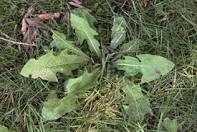Autumn is an important time in the gardening calendar; not only does it herald the arrival of a new gardening year, it’s also time to take stock and plan the coming months’ horticultural activity.
Get your garden ready for winter
Tidy up time
When leaves start falling thick and fast, pick them up and compost them for lovely nutrient rich soil food. Similarly, any annuals that wowed over the summer months will be looking tired now. Dig them up and throw them away, preferably on your composter.
Love your lawn
Before the frosts set in, it’s a good idea to give your lawn a thorough raking, to aerate it. Follow up with an application of lawn fertiliser. If it’s a mild winter you can continue to mow the lawn, though remember to raise the height of the blades.
Feed the soil
Add as much organic compost as possible to give your soil the best head start for the coming months. You don’t need to dig deep and turn the soil over for winter; the more you dig the more damage you will cause, so let nature do its bit by simply absorbing the nutrients.
Make your wish list
One of the best bits about the whole wintry shebang is browsing seed catalogues, deciding on your new season scheme and ordering your seeds. If you have a greenhouse or propagator you can start planting as early as January.
Bring inside
Tender plants such as dahlias can be lifted, brought inside and potted up for a warm winter indoors. Make sure they’re clean and pest-free before they come over the threshold, and keep them well watered.
Look after wildlife
Put up bird feeders and our feathered friends will thank you for their food and drink by doing away with over-wintering pests. Feed them with nuts, over-ripe apples and raisins or, if you’re shopping for bird food, choose high-energy fat balls. If we have a sudden cold snap check the water hasn’t frozen over and put out some fresh food. Read up on encouraging wildlife into your garden.
Prune
Perennials need to be cut back hard, so too do apple and pear trees, buddleia and summer-flowering clematis. For more advice on what to prune and when see our guide to pruning plants.
Protect
If yours is a sheltered city garden, you may not need to protect tender plants – but if your garden is exposed to harsh climes it’s a good idea to invest in some bark compost or mulch to protect herbaceous perennials. If you’re in a particularly windswept area, you can hold the mulch in place with fleece.
It isn’t just plant life that needs protecting over winter. Wooden benches, pergolas and trellising will thank you for a protective preservative treatment.
Repair
Now that your herbaceous borders are empty, it’s the perfect time to make any structural repairs to fences, walls, plastering and woodwork. Choose a dry and not too cold weekend for any cementing though. Check out our section on garden maintenance.
Introduce some winter colour
It needn’t all be bleak and bland over the winter months. Cyclamens, pansies, violas, winter jasmine and witch hazel are our winter troopers adding some much needed colour and variety to the landscape.


